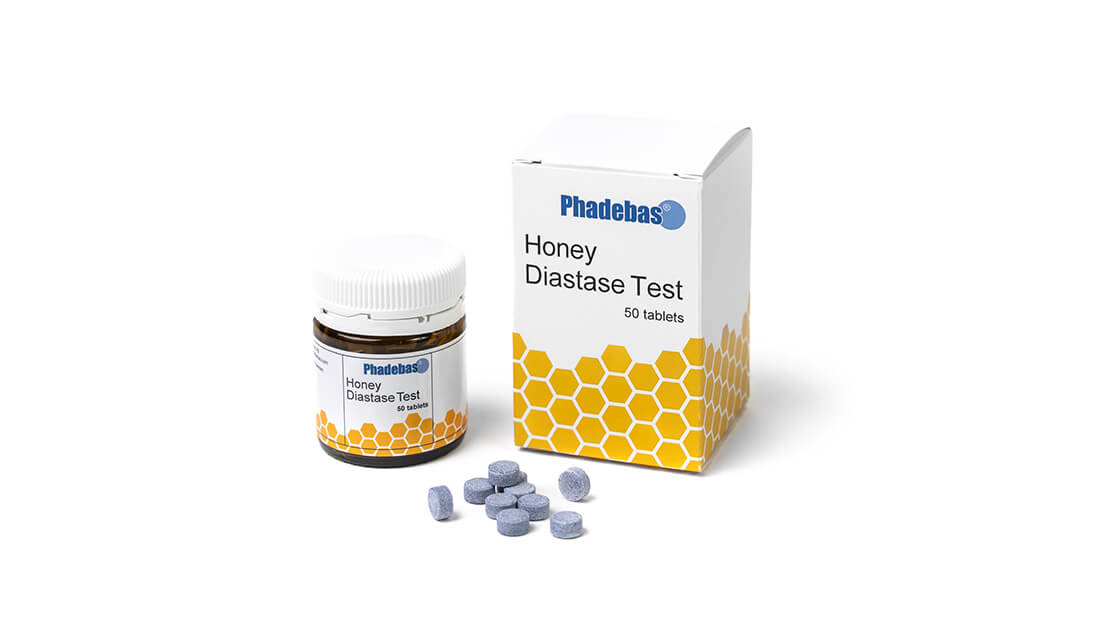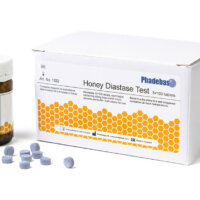Phadebas® Honey Diastase Test (50)
€140.00
Phadebas® Honey Diastase Test (50)
Description
Contains 50 Phadebas® Honey Diastase Test tablets. Includes instructions for use in English and an activity table for instant activity reading in Schade units.
Phadebas® Instructions for Use
Instructions Phadebas® Honey Diastase Test
Harmonized Methods of the International Honey Commission
Note: Not including updated Phadebas method. Please refer to Instructions Phadebas® Honey Diastase Test listed above.
Phadebas Honey Diastase Test instructional video
Phadebas® Safety Data Sheets
Q&A Phadebas® Honey Diastase Test
Q: Why should I choose the Phadebas test for my alpha-Amylase tests?
A: The Phadebas Honey Diastase Test has been optimized specifically for the purpose of analysing honey samples. It is an IHC validated standard method used worldwide, with twice the precision compared to Schade.
The test uses a well-defined substrate, which is specific for alpha-Amylase. Hence, it will not cross-react with enzymes that hydrolyse non-reducing terminal residues of starch, such as beta-Amylase or Invertase.
Q: Should I incubate for 15 min or 30 min when analyzing honey according to the IHC method?
A: You should always incubate for 30 minutes when analyzing honey with Phadebas Honey Diastase Test. The method of the International Honey Commission has unfortunately not been updated yet. After a change of blue dye to a less reactive type one must incubate longer to reach the same results as before.
Q: My spectrophotometer doesn’t measure at 620 nm. What if I use 590 nm?
A: 620 nm is an absorption maxima for the chromophore of the blue dye we use in Phadebas. You will still obtain measurable results, but you will lose in sensitivity and presumably in precision. This may result in increased RSD values and if you are measuring low or very low DN, we recommend using the specified wavelength.
Q: Can I use deionised water instead of distilled?
A: Yes.


